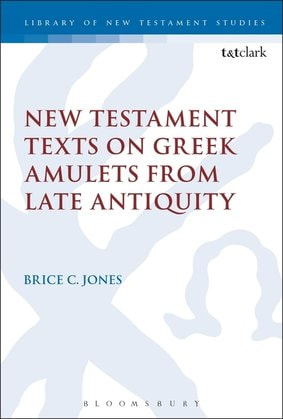|
P.Oxy. 2 is a papyrus sheet (partial) that was folded in antiquity to create two codex leaves (i.e., a bifolium) on which the Gospel of Matthew was inscribed (complete high-res images: recto, verso). It is the the first papyrus in the Gregory-Aland system, designated "P1." Most of the first leaf is missing; the text of Matthew 1 is featured on the second leaf. The first, partial leaf is important, however, because it is a “flyleaf” or coversheet similar to what we find in other codices, such as BnF Suppl. gr. 1120 ii 3 (P4, Matthew). Surprisingly, most textual critics have ignored this flyleaf. Even Simon Gathercole in his 2012 article “The Earliest Title of Matthew’s Gospel” (published in Novum Testamentum) did not mention P.Oxy. 2 in his discussion of the flyleaf and title of Matthew’s Gospel in BnF Suppl. gr. 1120 ii 3/P4. It is also not found in INTF’s Virtual Manuscript Room’s transcriptions (http://ntvmr.uni-muenster.de/manuscript-workspace). Most people will have never heard of it. But this flyleaf appears to contain an unusual title(?) to Matthew’s Gospel: Grenfell and Hunt, the editors of this papyrus, noticed that the text on the flyleaf was written in a different hand and suggested that the three lines “may have formed a title of some kind.” They provided the following transcription of the title:
Notice the extra material in the photo on the right (the title is on the back side). In any case, I suspect that the edge of the papyrus was damaged at some point resulting in the loss of the two letters εν at the end of line 1.
In 1971, José O’Callaghan proposed that these three lines are from Matthew 2:14: ἐγερθεὶς παρέλαβεν τὸ παιδίον καὶ τὴν μητέρα αὐτοῦ [...] Comfort and Barrett claimed that “it could be conjectured that it was not so much a title as it was a kind of subhead descriptor,” and proposed the following transcription:
We can only guess at what the papyrus read at this point, since we are working with only 8 letters. But I would like to offer another possibility (cf. 1:20):
σαρκωθέντα ἐκ πνεύματος ἁγίου καὶ Μαρίας τῆς παρθένου “He was made flesh (=born) by the Holy Spirit and Mary, the Virgin” Since the handwriting of the title (or “subhead descriptor”) of P.Oxy. 2 is likely later than that of the main text, which is dated to the 3rd century, we might say that the scribe or reader who inscribed the flyleaf was familiar with this creedal formula and decided to introduce his copy of Matthew in precisely this way. It also resonates with words and phrases we find in the opening chapter of Matthew ("born of the Holy Spirit," "his mother," "ἐγεννήθη"). That early Christians continued to recognize Mary as the one who gave birth to Jesus is evidenced in a variety of early Christian texts and artifacts. One example is the ΧΜΓ symbol, probably signifying Χ(ριστὸς ὁ ἐκ) Μ(αρίας) Γ(εννηθείς) ("Christ, the one born of Mary"). There are certainly other possibilities than what I have proposed (including trying to read παρθένος in the second line, among other things), but I think a highly reasonable conclusion is that the three lines probably communicated something about Jesus' being born by Mary.
0 Comments
Your comment will be posted after it is approved.
Leave a Reply. |

Available at Amazon!
Archives
June 2020
Categories
All
|